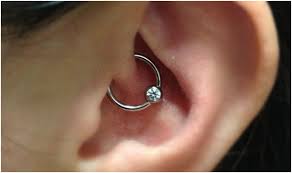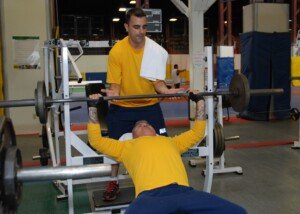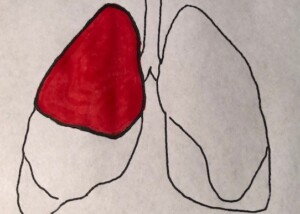How Dangerous Is Feeling a Pulse in Your Stomach?

If you can feel a pulse in your stomach, this can mean a life-threatening condition involving a major blood vessel that runs down your abdomen or a cancerous tumor. (more…)
You Know It’s Time to Start Strength Training When …

Have you been toying around with the idea of starting a strength training regimen but keep putting it off, waiting for the “perfect” time?
Well, there really isn’t a perfect time to begin training with weights, but you certainly know you’re READY to start lifting weights for fitness when certain things are happening with you — whether you’re a woman or a man.
It’s Time to Start Strength Training When …
• Every time you look in the mirror at your arms, you grimace or shake your head.
• You have a habit of grabbing the flappy part of your upper arm and staring at it in disdain.
• You sometimes find yourself deliberately making your “bat wings” jiggle by patting them with your fingers.
• You do the same thing with your inner thighs.
• Every time you see a woman with a super toned body, you think, “Why can’t I look like that?”

This is not a body of malnourishment. It’s a body of strength training and food portion control. Those are strong arms, not weak arms! Shutterstock/Jacob Lund
• You’re sick and tired of asking men – and even women – to carry heavy things for you — definitely a clue it’s time to start hitting the weights!
• You can’t pick up your 125 pound wife or girlfriend.
• You dread carrying your preschooler or toddler around, especially when it’s time to set them in the car seat.
• You let garbage pile up for someone stronger to take out.
• You avoid doing tasks that involve lifting something weighty like removing a box of books from a high shelf.
• Your jeans no longer fit but you haven’t gained weight on the scale.
• You’ve heard at least one person call you “skinny fat” — a clear indication it’s time to start strength training.
• You’ve gained fat despite not increasing your caloric intake.
• Your back is beginning to ache for no apparent reason.
• Your back and/or body aches after doing housework, yard work or participating in an unexpected play session with the kids.
• You dread helping a friend move despite the free pizza and beer – not because you’d rather be relaxing on your deck on a Saturday afternoon reading a book but because you know that the physical work will drain you for the next three days.
• You make your seven-year-old shovel the snow in the name of contributing to the household when you know the real reason is that it would kill your back.
• You stomach is mysteriously increasing in size even though you’ve cut back on the beer and donuts.
• Your young child lovingly says you’re “squishy.”
• You pay markedly close attention to the TV whenever a commercial comes on for a health club.
• When you find nicknames like “Beanpole,” “Skones,” “Teddy Bear” and “Chubs” no longer endearing.
• When friends suggest you enter a Mr. Puniverse contest and you know you’d win.
Oh, and one more: When people keep telling you “Eat a cheeseburger!” or “Eat a salad!”
If you’ve answered “Yes” to even one of these bullet points, you know it’s time to begin strength training!
Though there’s never a perfect time to begin lifting weights, there is always a right time to start a weightlifting program for a fitter, healthier body composition, stronger joints, a boosted immune and cardiovascular system, better balance and better brain function.
 Lorra Garrick has been covering medical, fitness and cybersecurity topics for many years, having written thousands of articles for print magazines and websites, including as a ghostwriter. She’s also a former ACE-certified personal trainer.
Lorra Garrick has been covering medical, fitness and cybersecurity topics for many years, having written thousands of articles for print magazines and websites, including as a ghostwriter. She’s also a former ACE-certified personal trainer.
Falls in People 65+: Harbinger for Doom in the Near Future

If you know someone over 65 or are a senior yourself, here’s some frightening news: If you fall, this is a marker for bad things to come within the next six months. (more…)
Are Pull-ups Really Harder for Tall Women?

With more height comes more body weight, but this isn’t the reason why pull-ups might seem more difficult for a tall woman.
A tall woman has longer arms, and some say that this longer length creates a greater range of motion for the pull-up. (more…)
Fixed Weight Barbell vs. Olympic Barbell for Deadlifts

There are several few ways that doing deadlifts with a fixed weight barbell differs from using an Olympic bar with plates.
First off, you will note that the fixed weight or preloaded barbells are much shorter than the standard Olympic bar. (more…)
Migraine Headache Sufferer’s Advice on Daith Piercing

If you’re plagued by migraine headaches and nothing has worked, you may have considered daith piercing as yet one more treatment to try.
After all, a migraine attack can land a person in the emergency room with agonizing pain.
What is daith piercing?
This is a piercing of the ear’s innermost fold of cartilage. The word “daith” is pronounced “doth” (rhymes with “moth”).

Lisa Jacobson has experienced migraine headaches for 25+ years.
Does daith piercing actually work for suppressing migraine headaches?
How effective can something like this be?
For many, it’s “miraculous,” says Jacobson. “Unfortunately for the other half, it has not worked.”
If you want to try this approach for your stubborn migraines that do not respond to other more conventional treatments, Jacobson recommends using only a highly experienced piercer.
“Meet the person in person and question how many they’ve done,” says Jacobson. “If they ask you about it, head for the hills!”
Which ear for the piercing?
“ If you get migraines on one side, it makes sense to try that ear first for daith piercing,” says Jacobson. “If it works, you may want to consider the other ear.”
Is daith piercing painful?
“It completely varies by person (and perhaps by piercer),” says Jacobson. “Some say it is brutal and others say they didn’t even feel it.”
Healing Time
It is one to three months.
What is the price?
“Daith piercing costs about $50 for one treatment,” says Jacobson.
Does Jacobson endorse daith piercing?
“I am not a doctor, so I do not endorse anything,” she says.
“But I am here to give people access to anecdotes from people who have tried it so they can make an informed decision.”
You may also want to ask your primary care physician about daith ear piercing for migraine headaches.
 Lisa Jacobson’s goal is to create a community for helping as many people as possible get rid of their chronic migraines through help, healing and humor.
Lisa Jacobson’s goal is to create a community for helping as many people as possible get rid of their chronic migraines through help, healing and humor.
 Lorra Garrick has been covering medical, fitness and cybersecurity topics for many years, having written thousands of articles for print magazines and websites, including as a ghostwriter. She’s also a former ACE-certified personal trainer.
Lorra Garrick has been covering medical, fitness and cybersecurity topics for many years, having written thousands of articles for print magazines and websites, including as a ghostwriter. She’s also a former ACE-certified personal trainer.
.
Top image: Shutterstock/B-D-S Piotr Marcinski
Noisy Breathing: Danger Symptom or just an Annoying Habit?

Most causes of noisy breathing at rest in a seemingly normal body won’t kill you, but some are life-threatening while others will almost always be accompanied by other concerning symptoms.
Sometimes, a person’s breathing can be heard clear across a room — even though they are not “out of breath” or panting from having just run up a flight of stairs.
That person could just be sitting there reading or texting, but you can hear the breathing.
This is not normal, though this can be nothing more than an annoying habit to those nearby.
First of all, if someone is in a hospital, it won’t be surprising to easily hear each breath from across a room if they have any of the following conditions:
- Blood clot in a lung
- Bodywide infection
- Shock from blood or fluid loss
- End stage liver cirrhosis
But what about the seemingly normal man or woman who’s just sitting somewhere in public or at home and has loud and annoying breathing?
This person could also be sitting next to you on a plane, and you’re forced to hear every single breath.
“Audible breathing could mean nasal congestion (due to a cold or possibly an anatomic issue like a deviated septum),” says Susan L. Besser, MD, with Mercy Medical Center, Baltimore, and Diplomate American Board of Obesity Medicine and board certified by the American Board of Family Medicine.
“Also, noisy breathing could happen with an asthma exacerbation or in people with chronic lung disease or heart failure who are having difficulty breathing,” adds Dr. Besser.
“Panting or rapid breathing may not necessarily accompany people with this issue (especially if they are fatiguing and it’s getting harder to breathe).”
More Serious Causes of Noisy Breathing
• Fever from pneumonia or the flu
• Heart attack
• Abnormal heart rhythm
• Severely high blood pressure in one’s lungs
• Blood entanglement in the brain
• Lung cancer
• Respiratory system obstruction
• Severe anemia (low red cell count)
• Thyroid disorder
• Obstructive sleep apnea
Less Serious Causes of Heavy or Noisy Breathing
• Fever (lower grade)
• Bronchitis
• Pregnancy
• Dehydration
• Anxiety
• Allergies
Remember, some individuals DO breathe rather loudly or noisily, simply out of habit, or because they are obese.
It’s a chronic situation with them rather than suddenly out of the blue, and tight clothes may contribute.
Since so many conditions can lead to noisy breathing, it’s important to see a doctor if you have new-onset, unexplained “heavy” breathing.
 Dr. Besser provides comprehensive family care, treating common and acute primary conditions like diabetes and hypertension. Her ongoing approach allows her the opportunity to provide accurate and critical diagnoses of more complex conditions and disorders.
Dr. Besser provides comprehensive family care, treating common and acute primary conditions like diabetes and hypertension. Her ongoing approach allows her the opportunity to provide accurate and critical diagnoses of more complex conditions and disorders.
 Lorra Garrick has been covering medical, fitness and cybersecurity topics for many years, having written thousands of articles for print magazines and websites, including as a ghostwriter. She’s also a former ACE-certified personal trainer.
Lorra Garrick has been covering medical, fitness and cybersecurity topics for many years, having written thousands of articles for print magazines and websites, including as a ghostwriter. She’s also a former ACE-certified personal trainer.
What is a Safe PSA Count?

The PSA count is a widely accepted screening tool for the presence of prostate cancer.
As for what is truly a safe PSA count, here is what Michael D. Lutz, MD, explains:
“If your PSA is less than 1ng/mL, you are in great shape.
Prostate cancer is exceptionally unlikely with a PSA this low, and many organizations believe that if your PSA <1ng/mL, you can likely skip the digital rectal examination and have the blood test repeated in five years for adequate screening.”
Dr. Lutz is a board certified urologist; urologist with Corewell Health/Beaumont Hospital; President, MIU Men’s Health Foundation.
Traditionally, what’s perhaps been considered a so-called safe PSA count is 4.0 ng/mL and lower.
Levels above this amount would prompt doctors to recommend a prostate biopsy.
However, men with a PSA below 4.0 ng/mL are not immune to prostate cancer and have actually developed this disease.
Therefore, to say that a “safe” PSA level is anything below 4.0 is no longer accepted as accurate.
Of course, men with higher PSA levels may never develop prostate cancer.
The general consensus, however, is that the higher the PSA level, the more likely that prostate cancer is present.
Causes of an Elevated PSA
PSA (prostate specific antigen) level can become elevated in response to an inflamed prostate, urinary tract infection or surgery on the prostate. Some drugs can also deflate the PSA count.
Men need to be vigilant about having their PSA count taken on a regular basis.
Regular testing is especially important for men over 50 or those with a family history of prostate cancer.
Discuss with your healthcare provider to determine the appropriate frequency of PSA testing based on your individual risk factors and health history.
Symptoms of Prostate Cancer
• Weak urine stream; difficulty generating a urine stream
• Difficulty controlling urination
• Burning or pain when urinating
• Frequent feeling of urgency that’s not resolved after voiding
• Erectile dysfunction
• Painful or weak ejaculation
• Visible blood in the urine
• Visible blood in the semen
• Pain or stiffness in the pelvis, lower back, hips or thighs
 Dr. Lutz is experienced in all areas of adult urology and has special interests in urological cancer, male fertility and urologic stone disease. Men’s Health Foundation
Dr. Lutz is experienced in all areas of adult urology and has special interests in urological cancer, male fertility and urologic stone disease. Men’s Health Foundation
 Lorra Garrick has been covering medical, fitness and cybersecurity topics for many years, having written thousands of articles for print magazines and websites, including as a ghostwriter. She’s also a former ACE-certified personal trainer.
Lorra Garrick has been covering medical, fitness and cybersecurity topics for many years, having written thousands of articles for print magazines and websites, including as a ghostwriter. She’s also a former ACE-certified personal trainer.
Top image: ©Lorra Garrick
Source: cancer.gov/types/prostate/psa-fact-sheet#q3
Causes of White Specks or Particles in Urine: See a Doctor

If you’re seeing white particles or specks in your urine, you need to see a doctor.
“Your urine is usually clear and any debris, white specks or otherwise, is not a good thing and should get checked out,” says Michael D. Lutz, MD, board certified urologist with Corewell Health/Beaumont Hospital; President, MIU Men’s Health Foundation.
Causes of White Flecks or Specks in Your Urine
“The most common cause is a urinary tract infection and easy to determine by performing a urine dipstick test or microscopic urinalysis,” says Dr. Lutz.
“The other common cause of white specks would be phosphate or other crystals in the urine which is a sign of possible kidney stone formation.”
Kidney stones are made up of minerals and salts. Thus, it’s easy to understand how some of these constituents can make it into your urine stream, appearing as tiny white particles.
Treatment for kidney stones ranges from pain medication and drinking high amounts of water to pass the stones, to surgery.
Additional Symptoms of Kidney Stones
• Severe pain in the side and back, below your ribs
• The pain may radiate to the lower abdomen and groin
• Red, brown or pink urine (from blood)
• Urine may appear cloudy, but this is due to the white specks
• Frequent urination
• Nausea, vomiting
• Fever from infection
Dr. Lutz further explains, “Lastly, in men who have developed retrograde [declining] ejaculation either from prostate surgery, medications or underlying health conditions, will notice semen mixed with the urine which will appear with white flecks.”
Additional Causes of Seeing White Things in Your Urine
• Untreated yeast infection. A yeast infection, also known as candidiasis, is an overgrowth of a type of fungus called Candida.
It typically affects warm, moist areas of the body, like the mouth, throat and genital area.
• Untreated parasitic infection. A parasitic infection occurs when parasites invade the body and cause illness.
These infections can range from mild to severe and affect various parts of the body.
• And for women — use of estrogen vaginal cream (some of the cream may disseminate, causing tiny white particles of it to come out with urine flow).
 Dr. Lutz is experienced in all areas of adult urology and has special interests in urological cancer, male fertility and urologic stone disease. Men’s Health Foundation
Dr. Lutz is experienced in all areas of adult urology and has special interests in urological cancer, male fertility and urologic stone disease. Men’s Health Foundation
 Lorra Garrick has been covering medical, fitness and cybersecurity topics for many years, having written thousands of articles for print magazines and websites, including as a ghostwriter. She’s also a former ACE-certified personal trainer.
Lorra Garrick has been covering medical, fitness and cybersecurity topics for many years, having written thousands of articles for print magazines and websites, including as a ghostwriter. She’s also a former ACE-certified personal trainer.
.
Top image credit: Federico Candoni
Why Urine that Looks Like Bubbly Beer Can Mean Serious Disease

It’s not funny if your urine bubbles or foams like beer; this can mean a life threatening condition.
If you’ve noticed lately that your urine is full of bubbles, here is an explanation from Michael D. Lutz, MD, board certified urologist with Corewell Health/Beaumont Hospital; President, MIU Men’s Health Foundation.
“Bubbly urine with the appearance of a ‘head of beer’ can occasionally occur during periods of mild dehydration and a rapid, forceful, and/or turbulent stream.”
Urine that foams or bubbles like beer is NOT caused by drinking beer.
Dr. Lutz further explains, “However, if you have a consistently foamy [or bubbly] urine, it is likely that you are spilling excess amounts of protein in the urine which is usually secondary to an underlying kidney disease.”
A simple urinalysis from a sample of your urine can show if there is excess protein.

Shutterstock/plenoy m
If you’re noticing persistent bubbling, make an appointment with your doctor.
Kidney disease, says Dr. Lutz, “is one of the earliest effects of diabetes mellitus upon the kidneys in addition to the spillage of excess sugar in the urine which may give it a ‘sweet’ odor.
“If you start spilling significant amounts of protein in the urine, you may develop secondary effects like swelling of the legs or around the eyes.”
The swelling in the legs is called edema, but the absence of this or any swelling around the eyes does not mean that you’re in the clear from kidney disease.
Diabetes Mellitus
The term “mellitus” does not indicate type of diabetes; it’s simply used as part of the name of this condition.
Type II diabetes is closely linked to lifestyle choices. The pancreas produces insulin, but the system of insulin delivering blood sugar to muscle cells is impaired in type II.
Type I diabetes seems to have no connection to unhealthy lifestyle choices.
The body’s ability to metabolize blood sugar may be in perfect working order.
The problem in type I is that the pancreas does not produce insulin.

Additional Causes of Bubbly or Beer-Like Urine
• Enlarged kidneys from pregnancy
• Excessive protein consumption
• UTI (urinary tract infection)
You should keep a regular visual surveillance of your urine for any abnormal or unexpected changes in its color or other characteristics.
Collecting your urine in a plastic cup will help you more readily see if it’s bubbling abnormally or truly looks like foamy beer.
 Dr. Lutz is experienced in all areas of adult urology and has special interests in urological cancer, male fertility and urologic stone disease. Men’s Health Foundation
Dr. Lutz is experienced in all areas of adult urology and has special interests in urological cancer, male fertility and urologic stone disease. Men’s Health Foundation
 Lorra Garrick has been covering medical, fitness and cybersecurity topics for many years, having written thousands of articles for print magazines and websites, including as a ghostwriter. She’s also a former ACE-certified personal trainer.
Lorra Garrick has been covering medical, fitness and cybersecurity topics for many years, having written thousands of articles for print magazines and websites, including as a ghostwriter. She’s also a former ACE-certified personal trainer.






































































